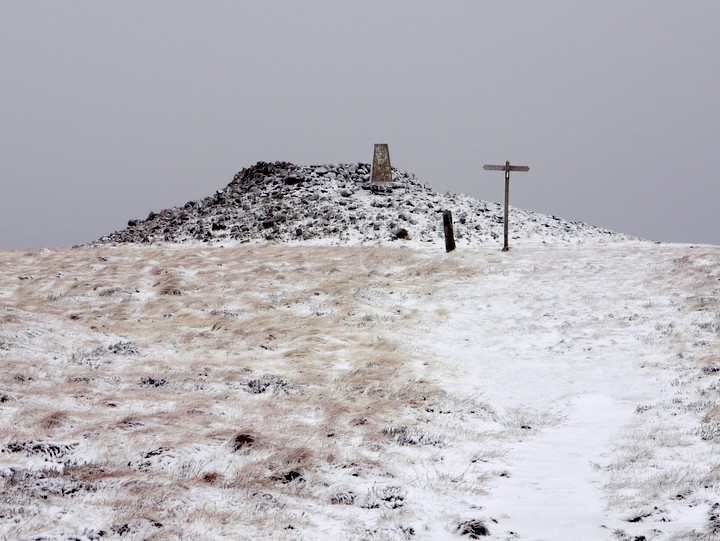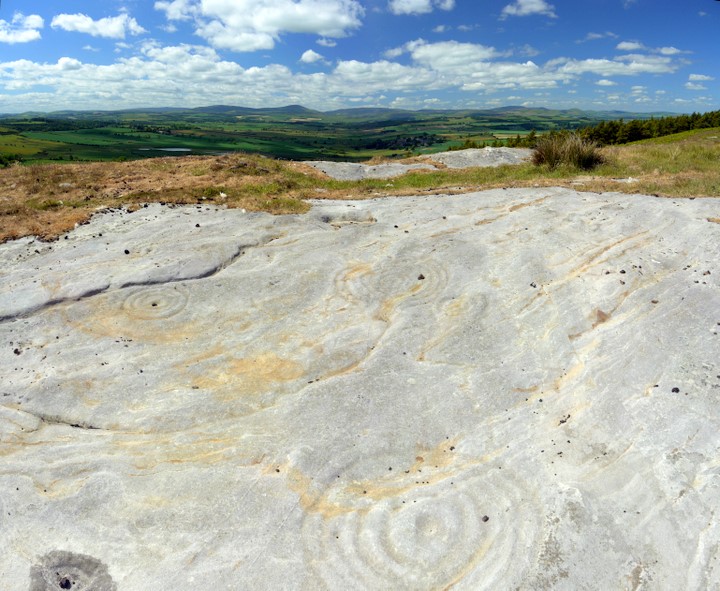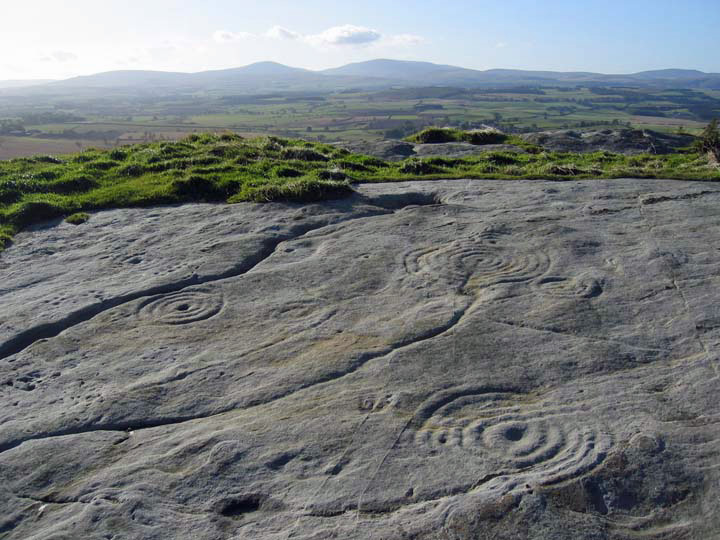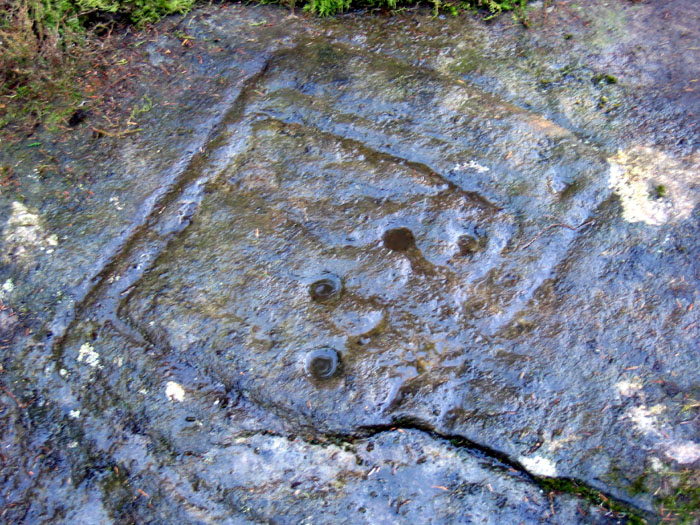Northumberland SMR abstract for Bygate Hill (10236)
(Marginal) A double circle of stones, reported by Mr Surtees to have stood until recently (1827) on Heddon Hill, a mile south west of West Belsay. The inner circle was 60 yards in diameter, and the outer, concentric with it, and from 15 to 20 yards from it. At the centre was a standing stone 10ft high. When Mr Surtees last visited the ground the circles had apparently been levelled, ‘the large stone cut into gateposts, and the smaller ones into materials for and adjoining sunk fence’. The view is very extensive especially towards the east. (1)
(Marginal) ‘Some ancient earthworks and hut circles’ on Heddon Hill, now called Bygate Hill. ‘These we believe to be the remains referred to by Mr Hodgson, which, if he had seen them himself, he would not have called them concentric circles. As we were accompanied by George Wilkinson, who built the sunk wall to which Mr Hodgson alludes, it is probable that we were on the right spot, indeed, our guide pointed out some holes from which the stones had been taken’. The remains consisted of an enclosure, hexagonal in shape and containing about 2.5 roods. ‘The circular parts, which are formed, like the principal enclosure, of earth and stones, are placed together at the north west.... One, more elevated than the rest, has more the appearance of a beacon than a hut circle, and has not escaped the Ordnance Surveyors’. (There is no beacon marked on OS 6! 1865. The trig station at NZ 06817702 is possibly meant). The older inhabitants had no knowledge of the circles described by Hodgson. (2)
Bygate Hill was possibly an early camp. (3)
NZ 06837705. An earth bank, situated on the highest part of Bygate Hill in an all-round commanding position close to the trig station, probably represents the works referred to above. The hill is covered by a dense fir plantation. The bank is visible across a fire-break and can be traced for a few metres into the plantation, but the trees are too dense for a survey to be made. (4)
No trace of the earthworks can now be recognised owing to the density of the plantation. (5)
(1) Hodgson, J.C., 1827. History of Northumberland, part 2, vol.1 (363-4
(2) MacLauchlan, H. 1864. Survey of Eastern Branch of the Watling Street (Newcastle upon Tyne), 8-9
(3) Dodds, M.H. 1926. A History of Northumberland, vol.12 (Newcastle upon Tyne), 13-14
ads.ahds.ac.uk/catalogue/collections/nsmr03abstracts/10236.html














































